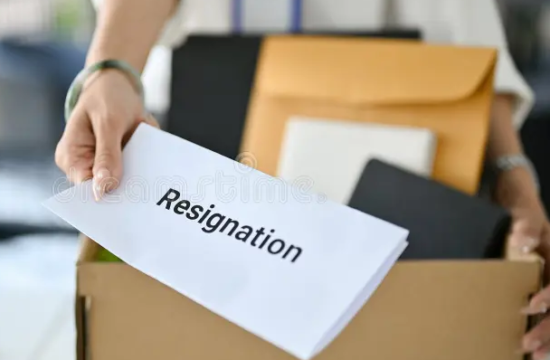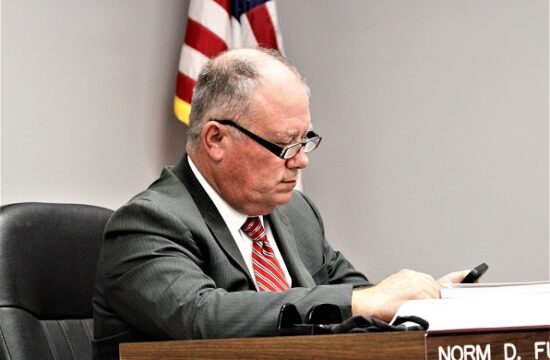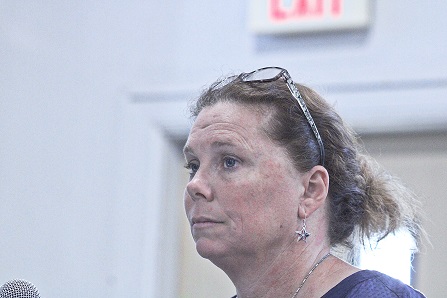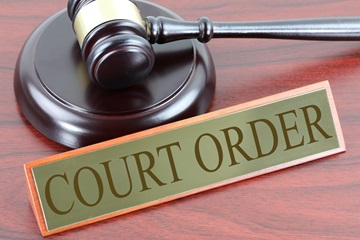By Terry Witt – Spotlight Senior Reporter
The outside of the 85-year-old Levy County Courthouse probably looks much like it did when it was first constructed, with stately magnolia trees standing on the front lawn like pieces of fine southern art, but will the trees survive the pending re-design of the building’s front courtside entrance?
Levy County Commissioners haven’t reached the point where they are ready to approve a final design for the interior of the courthouse on the side where courtrooms are located, or changes to the courtside front entrance that would improve access for handicapped people, jurors, and residents with business in the courts. Discussions about the design are continuing.
At the June 21 county commission meeting, the board talked to Paul Silverman, trial court administrator of the 8th Judicial Circuit, Chief Judge Mark Moseley, and Architect Doug Barlowe, but discussions didn’t result in a final design that satisfied the full board and particularly County Commissioner John Meeks.
Silverman, Moseley, and Barlowe were told by Meeks to return with something similar to the original design that was developed when he was chairman which doesn’t create as many handicapped ramps with handrails at the front of the courthouse and which would have a patio of sorts built between the two courthouse front entrances for cigarette smokers or possibly attorneys and clients to use.
What wasn’t discussed was saving the magnolia trees. It wasn’t mentioned. The discussions at the board meeting were about making much-needed and long-awaited changes to the interior and exterior of the courtside portion of the courthouse, and so naturally trees weren’t part of the discussion. Trees aren’t buildings. Courthouse needs and designs were discussed. But the magnolias have survived hurricanes and generations of county commissioners. Should the county make a conscious effort to save the magnolias?
Meeks was asked on Saturday in a text if the magnolia trees would be preserved or cut down.
“Do you happen to know if the three magnolia trees on the front lawn of the courthouse will be cut down or saved as part of this courthouse renovation and construction project?” he was asked.
“I’m not sure, some trees are in the site plan. The palms are gone though,” he said.
He was referring to the four towering cabbage palm trees that frame the courtside front entrance. The trees are scheduled to be cut down when the 8th Judicial District creates an extended front courtside entryway with a roof to provide cover to people waiting to enter the courts and go through the metal detector, particularly jurors.
Silverman displayed an artist’s rendering of what the covered front entrance and the three handicapped ramps would look like if constructed. The drawing showed people walking past the courthouse but there were no trees in the picture. The magnolias weren’t pictured. Was that just the artist’s oversight or is the ultimate plan to sacrifice some or all of the trees for the good of the court system? How would that change the looks of the courthouse frontage if the trees were cut?
The trees didn’t get so much as an honorable mention in the June 21 discussion. Trees usually don’t play any type of role in a project of this magnitude, but one of the statements Meeks made when he talked about the excessive number of handicapped ramps in Silverman’s latest design is that the ramps would negatively impact the looks of the historic front entrance of the courthouse.
“My other concern; now with three ADA (Americans with Disabilities Act) ramps, one on both sides of the entrance to the courtside and one on the clerk’s side, how is that going to affect this beautiful courthouse with all these ramps and handrails,” Meeks said. “It’s not going to be the traditional historic building it was, and I’m not saying this against your design.”
Meeks said he would prefer to see the area between the two front courthouse entrances made into a flat area with a patio that smokers, and attorneys and their clients, and others could use outside the courthouse. Meeks said he’s not a smoker, and he doesn’t criticize smokers, but he thinks a flat patio area could be created between the two front courthouse entryways for smokers or others to use if they want a place to gather outside the building.
“To me, that makes a better area for us to have and utilize,” Meeks added. “Another thing, if we do all these ramps and we leave the grass, that has been a maintenance nightmare since day one. I am going to advocate for that design.”
The final decision on which courthouse design makes the cut will be left to the full board. The four commissioners must vote on the design they prefer.
Meeks didn’t quarrel with the interior design changes proposed by Silverman which include adding another mini-courtroom just to the left of the interior courtside entrance for traffic court and other court proceedings that don’t require a jury. Changes would also be made to the courtside entrance to allow people leaving the courts to be separated from those entering. Changes are also planned for the upstairs area that was previously used for the civil division of the clerk’s office. It would be subdivided into mediation rooms, attorney-client rooms, a magistrate office, and other features.
This isn’t the first time the courthouse has been remodeled. In the 1990s county commissioners added a section to the northwest end of the courthouse. They constructed a hearing room and the first mini courtroom on that end of the courthouse. They also fixed up a backroom area for judicial offices and jury meeting rooms. The old jail attached to the courthouse was converted to offices for the property appraiser and county commission. The former glass lobby at the southeast end of the courthouse was enclosed with bricks.
More recently, the county commission, tax collector, and property appraiser vacated the courthouse and moved next door to what is now the Levy County Government Center. The clerk remained in the courthouse and occupies the entire southeast end of the building. The courts were assigned the entire northwest side of the building and are trying to make space fit the needs of the courts.
But are the magnolia trees going to be discussed as part of the renovation and new construction in the front area of the courthouse? Will the magnolias be spared the axe? Would cutting down the trees impact the historic appearance of the courthouse?
Or does it matter?
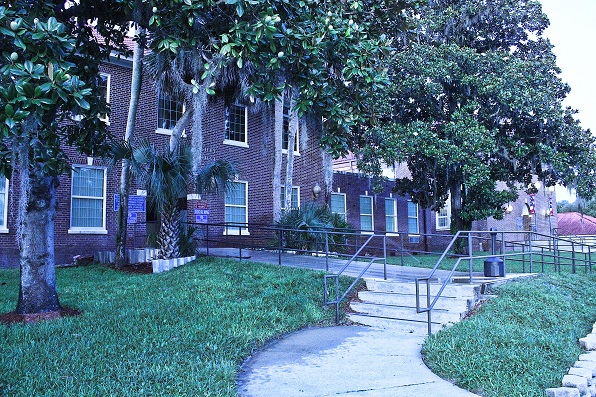
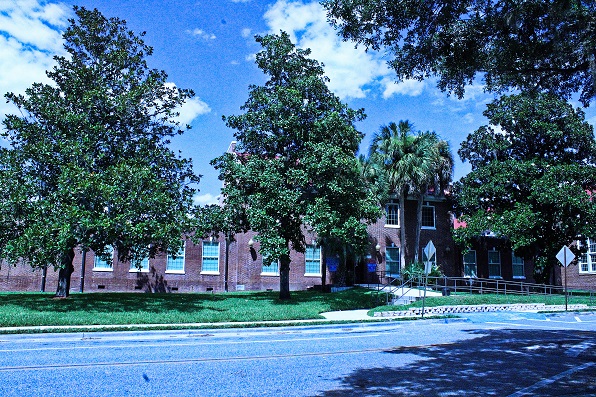
—————————
Board of County Commission Regular Meeting June 21, 2022; Posted June 26, 2022




